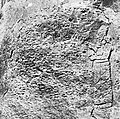Ashur-uballit I, the second being a follow-up letter to the first. In the letters, Ashur-uballit refers to his second predecessor Ashur-nadin-ahhe II...
5 KB (540 words) - 16:51, 10 September 2024
Ashur-nadin-ahhe II (Aššur-nādin-aḫḫē II) was king of Assyria from c. 1400 to 1391 BC. Preceded by Ashur-rim-nisheshu, he was succeeded by his brother...
3 KB (246 words) - 18:12, 20 September 2024
Ashur-nadin-ahhe I (Aššur-nādin-aḫḫē I) was a king of Assyria in the 15th century BC. He took power after the death of his father, Ashur-rabi I. During...
3 KB (234 words) - 04:34, 16 July 2024
Ashur-Dan II (Aššur-dān) (934–912 BC), son of Tiglath Pileser II, was the earliest king of the Neo-Assyrian Empire. He was best known for recapturing previously...
8 KB (950 words) - 17:53, 24 September 2023
of Ber-nādin-aḫḫe, son of Aššur-nērārī, supreme judge” and another gives the witness “Šamaš-kidinnu, son of Ibaši-ilu, son of Ber-nādin-aḫḫe, supreme...
3 KB (294 words) - 18:08, 20 September 2024
Study on the Synchronistic King List from Ashur. Leiden: BRILL. ISBN 978-9004430914. M. Capraro (1998). "Aššūr-nādin-apli". In K. Radner (ed.). The Prosopography...
7 KB (834 words) - 18:22, 20 September 2024
Ashur-nasir-pal II (transliteration: Aššur-nāṣir-apli, meaning "Ashur is guardian of the heir") was the third king of the Neo-Assyrian Empire from 883...
24 KB (2,688 words) - 21:35, 2 November 2024
in 1365 BCE under Ashur-uballit I and ended after the death of Ashur-bel-kala in 1053 BCE. Adad-nīrārī II's father was Ashur-dan II, whom he succeeded...
5 KB (451 words) - 21:35, 2 November 2024
Aššur-uballiṭ II, also spelled Assur-uballit II and Ashuruballit II (Neo-Assyrian Akkadian: 𒀸𒋩𒌑𒋾𒆷, romanized: Aššur-uballiṭ, meaning "Ashur has kept alive")...
18 KB (2,515 words) - 21:29, 7 November 2024
begun by Kikkia. Puzur-Ashur I may have started a native Assyrian dynasty that endured for eight generations until Erishum II was overthrown by the Amorite...
3 KB (310 words) - 22:57, 30 October 2024
Ashur-dan III (Neo-Assyrian cuneiform: Aššur-dān, meaning "Ashur is strong") was the king of the Neo-Assyrian Empire from 773 BC to his death in 755...
9 KB (1,104 words) - 19:07, 23 November 2024
Ashur-nirari V (Neo-Assyrian cuneiform: Aššur-nārāri, meaning "Ashur is my help") was the king of the Neo-Assyrian Empire from 755 BC to his death in...
11 KB (1,288 words) - 05:44, 27 September 2023
Puzur-Ashur II (also transcribed as Puzur-Aššur II) was king (Išši’ak Aššur, "Steward of Assur") during the Old Assyrian period c. 1880 to 1873 BC. Puzur-Ashur...
2 KB (290 words) - 11:00, 26 April 2024
Tiglath-Pileser II (from the Hebraic form of Akkadian Tukultī-apil-Ešarra) was King of Assyria from 967 BCE, when he succeeded his father Ashur-resh-ishi II, until...
3 KB (333 words) - 02:00, 10 May 2024
Enlil-Nasir II was the king of Assyria from c. 1430 BC to 1425 BC. The brother of Ashur-nadin-ahhe I, he seized the throne in a successful coup. Chen,...
2 KB (84 words) - 12:48, 12 April 2022
3 months c. 985 BC. Severe distress and famine was recorded under Kaššu-nādin-aḫi (c. 1006–1004 BC), the midpoint in Aššur-rabi's reign, and this possibly...
6 KB (688 words) - 08:00, 13 October 2024
achievements. His son, Ashurnasirpal II, succeeded him. Chen, Fei (2020). Study on the Synchronistic King List from Ashur. Brill. p. 89. ISBN 9789004430921...
4 KB (307 words) - 21:35, 2 November 2024
(c.1407–1399 BC, short chronology) Ashur-rim-nisheshu, King (c.1398–1391 BC, short chronology) Ashur-nadin-ahhe II, King (c.1390–1381 BC, short chronology)...
5 KB (570 words) - 12:23, 30 July 2023
Sennacherib (redirect from Sin-ahhe-eriba)
or Sîn-aḥḥē-erība, meaning "Sîn has replaced the brothers") was the king of the Neo-Assyrian Empire from the death of his father Sargon II in 705 BC...
97 KB (12,300 words) - 13:53, 15 November 2024
He was succeeded by his son, the briefly reigning Ashur-nirari IV, and then his brother Ashur-rabi II. Khorsabad Kinglist, tablet IM 60017 (excavation...
6 KB (731 words) - 18:55, 20 September 2024
Aššur-rā’im-nišēšu, probably in error. He succeeded his nephew, Aššur-nādin-aḫḫe II, being succeeded himself by the rather more prominent king Aššur-uballiṭ...
6 KB (635 words) - 18:13, 20 September 2024
Esarhaddon (redirect from Ashur-ahha-iddina)
in the south of Sennacherib's empire and in 694 successfully captured Ashur-nadin-shumi at the city of Sippar. The prince was taken back to Elam and probably...
80 KB (9,784 words) - 01:10, 24 November 2024
him as a contemporary of the Babylonian kings Ninurta-nādin-šumi, Nebuchadnezzar I and Enlil-nādin-apli, although the last of these is unlikely per the...
7 KB (839 words) - 18:37, 20 September 2024
Ashurnasirpal I (redirect from Ashur-nasir-pal I)
The Synchronistic Kinglist gives his Babylonian counterpart as Kashshu-nadin-ahi (c. 1006–1004 BC), but probably only for stylistic purposes as there...
5 KB (519 words) - 02:07, 19 November 2024
lordly palace, which are at the fore part of the enclosure", and Aššur-nādin-aḫḫē's terrace of the New Palace at Nineveh, placed gate guardians inspired...
11 KB (1,327 words) - 07:04, 9 October 2024
Tukulti-Ninurta I and might have succeeded his uncle or more probably his father Ashur-nadin-apli to the throne, who had participated in a conspiracy against Tukulti-Ninurta...
6 KB (693 words) - 11:47, 15 November 2024
Medes. The survivors of Nineveh's fall followed a new Assyrian ruler, Ashur-uballit II, possibly Sinsharishkun's son, to the city of Harran, where they continued...
60 KB (7,708 words) - 23:21, 22 November 2024
possible, with the intent to be handed down to his successor. The son of Ashur-resh-ishi I, he ascended to the throne in 1115 BC, and became one of the...
13 KB (1,513 words) - 06:08, 9 November 2024
Aššur-etil-ilāni (redirect from Ashur-Etil-Ilani)
also spelled Ashur-etel-ilani and Ashuretillilani (Neo-Assyrian Akkadian: 𒀸𒋩𒉪𒅅𒀭𒈨𒌍, romanized: Aššur-etil-ilāni, meaning "Ashur is the lord of...
11 KB (1,363 words) - 20:54, 7 November 2024
campaign to take the city of Harran in 610 BC. Harran was the seat of Ashur-uballit II, who had rallied what remained of the Assyrian army and ruled the Neo-Assyrian...
91 KB (11,163 words) - 18:38, 22 November 2024










